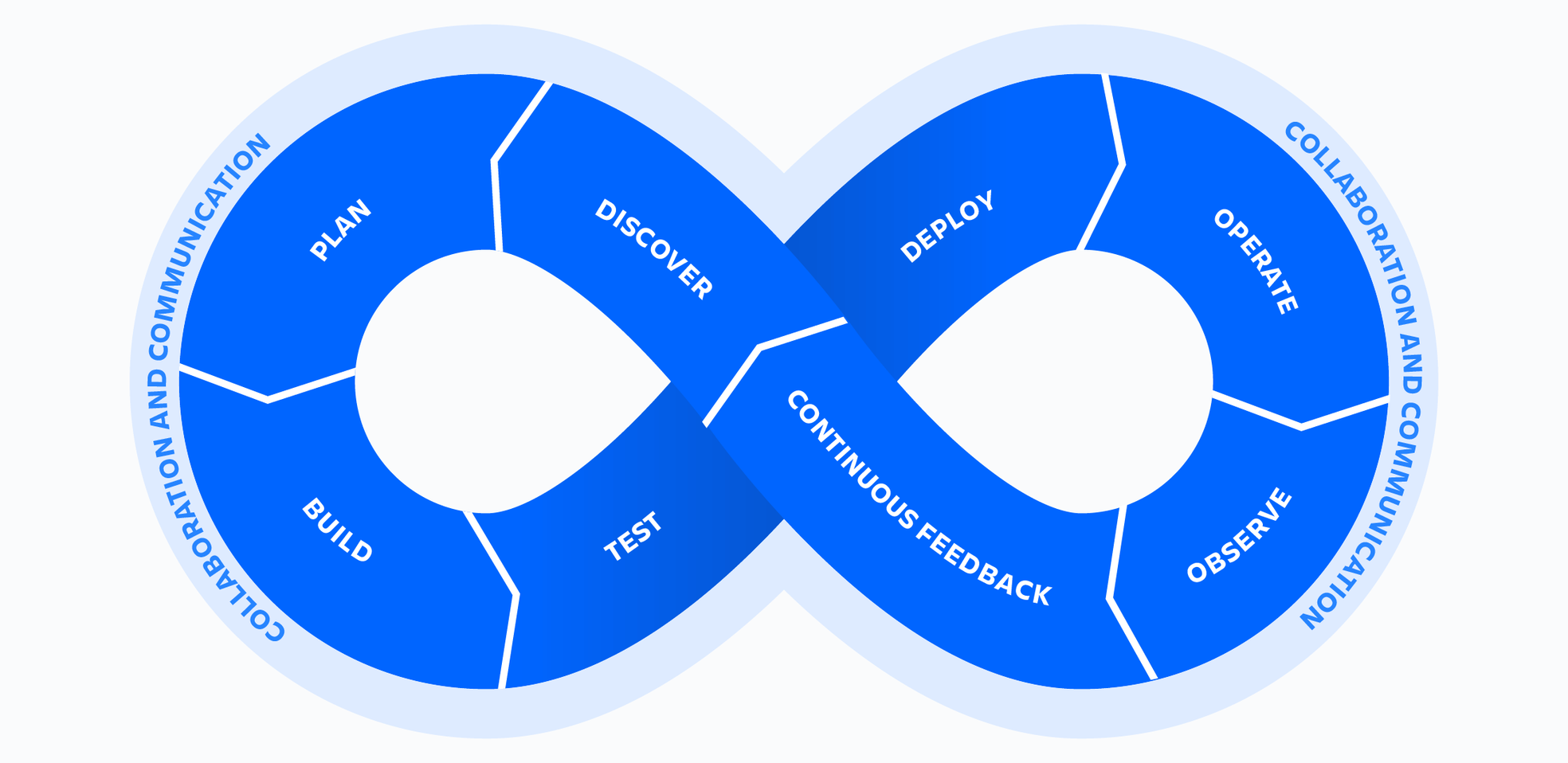What is a DevOps Toolchain, and How does It Improve Development?
[DevOps]
A DevOps toolchain is a bunch of tools that work together to make software. It helps teams work better together and makes sure the software is made well. It does things like testing and managing the software. The toolchain helps with Continuous Integration, Continuous Delivery, Automation, and Collaboration.
From agile methods to DevOps
Agile principles changed how we make things by using small teams and short periods to create ready-to-use things, with lots of feedback to keep improving. Because of new technology like the Cloud and always-on services, we can make things even faster now. DevOps is a set of ideas that make creating and testing software faster and more dependable by working together with IT teams. DevOps teams need to work fast to get code working well, and they use tools to do it quickly.
What is a DevOps tool chain?
A DevOps toolchain is a collection of tools and technologies that enable development and operations teams to collaborate throughout the entire software development lifecycle, addressing key DevOps fundamentals such as Continuous Integration, Continuous Delivery, Automation, and Collaboration. DevOps is a cultural shift in which development and operations teams collaborate as a single unit, and there is no single tool that enables DevOps principles and practices. A sophisticated DevOps product should cover various parts of the development life cycle and provide multiple perspectives, with development tools covering every phase of the development life cycle and operations tools supporting monitoring, incident management, and continuous feedback and logging.
In an endless loop, the left side represents the product side and the right side represents the operations side. The product manager wants to see how a new feature can be divided into tasks and user stories. The developer needs to know how the feature can be moved into production, including project tickets, user stories and dependencies. Following the DevOps principle of "you build it, you run it," developers are also interested in fixing incidents.
On the operations side, the Site Reliability Engineer needs to be familiar with the services that can be measured and monitored to fix any issues. Without a toolchain that connects all of these processes, an unorganized, uncorrelated, and chaotic environment will emerge. A well-integrated toolchain provides better context for the ongoing processes.
Ways to build your DevOps toolchain
To select the right DevOps toolchain, first we need to understand the fundamental DevOps practices and how tools support them. Then, establish a shared tool strategy that allows teams to collaborate across development, testing, and deployment phases.
When implementing DevOps, companies typically have two options: a universal or a customized DevOps toolchain. Choosing the right configuration is crucial as it determines a team's DevOps processes.
Universal DevOps tool chain
A universal DevOps toolchain provides an all-in-one solution that may not integrate with third-party tools. It can be useful for companies or teams starting with DevOps or wanting to quickly start a project. However, established teams may already have preferred tools that cannot be integrated into an all-in-one solution. Furthermore, an all-encompassing toolchain may not excel at anything and may not adapt quickly to changing market demands. Finally, most companies need to integrate older tools into a DevOps toolchain, which a universal toolchain may limit.
Customizable DevOps tool chain
Another approach is to use a DevOps toolchain that can be customized to meet the needs of a team with various tools. This allows teams to integrate existing tools that they already know and love into the broader DevOps toolchain. For example, a team can use Jira for planning and workflow tracking, Kubernetes for deploying individual development environments, GitHub for collaborative coding, Jenkins for continuous integration, and more. Companies can align their workflows with teams and/or projects.
Integration is essential for these types of toolchains. If the different tools are not integrated, team members waste unnecessary time switching between screens and logging in to multiple places. It can become challenging to exchange information between tools, which is an unpleasant experience for developers or anyone who wants to understand what's going on. When responding to an incident, there is no time to read a manual to find important information about a new tool.
Conclusion
DevOps is about breaking down barriers between teams and making the development process faster, more automated, and collaborative. When choosing DevOps tools, it's important to analyze your current software development and IT operations process to figure out where improvements can be made.
You want to know more about DevOps tools? Contact us:
Did we raise your interest?

Feel free to contact us!
See how STAGIL can help you:
The first consultation is on the house!